String fling: the Australian Chamber Orchestra’s search for a rare ‘Golden Age’ viola
Stefanie Farrands is on a multi-million dollar search for a new life partner. But the Australian Chamber Orchestra’s principal violist is not talking about a somebody at all.
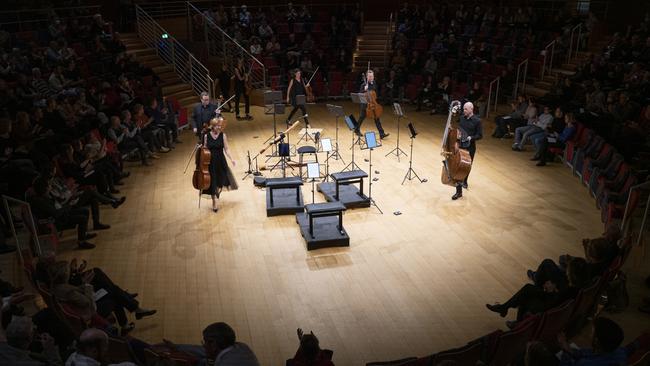
Stefanie Farrands is looking for a new life partner. “Name, age, doesn’t matter to me at all,” she says, “but what does is the character.” As she talks about resonance and expression, it’s easy to start forming a picture of a person, perhaps someone mature; with integrity. But the Australian Chamber Orchestra’s principal violist is not talking about a somebody at all – in fact she is engaged to Mitchell Nissen, a member of the Tasmanian Symphony Orchestra. Farrands is referring to an instrument she hopes will carry her into the next phase of evolution as a musician.
“It’s such a personal connection between the instrument and the player,” Farrands says. “It’s an extension of your arms, which feeds from your heart.”
In a few days, she will meet potential suitors in London at a premium instrument dealer as the ACO Instrument Fund looks to add a fifth stringed instrument, from the historical period known as “the Golden Age”, to its collection. An unlisted Australian unit trust, the fund currently holds a portfolio valued about $10.1m consisting of two “Brothers Amati” instruments – a 1616 cello and a 1590 violin – a 1728-29 Stradivari violin and a 1714 Guarneri violin, which are loaned to players in the orchestra. There are four ways the musicians of the ACO access instruments: through the fund; they buy their own; or they play an instrument that is owned by or on loan to the ACO (for example, the orchestra’s longstanding artistic director Richard Tognetti plays a 1743 Guarneri del Gesu violin on loan from an anonymous owner, while principal violin Satu Vanska plays the 1726 “Belgiorno” Stradivarius violin on loan from ACO chairman Guido Belgiorno-Nettis and his wife Michelle).
Melbourne-born Farrands, 34, was appointed principal viola of the ACO two years ago, and Tognetti says it is time that she, too, had a Golden Age instrument to play.
“Of course, it took us a while to find a great violist, which is what Stef is,” he says. “She’s absolutely superb and she’s grown unbelievably. She needs a good viola because all of us have access to great instruments.”
So what is Farrands looking for in a new partner?
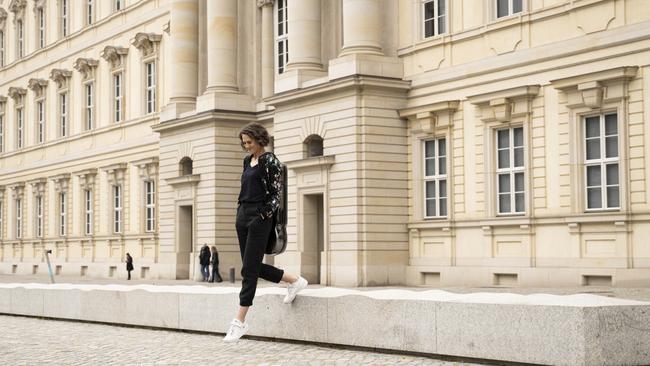
“The beauty of the viola is in its rich, complex sound and finding an instrument that also reflects that is what I’m after,” she says. “I gravitate always towards the rich, dark chocolate, just velvety [sound]. Like a hug sound when you sink into a hot bath.”
The newest principal player of the ACO is speaking over a cup of tea in Berlin, where the ACO will play the second concert on its Europe tour that night before flying to London to perform a three-concert residency at the Barbican Centre, as part of the UK/Australia season 2021-22 supported by the Australian government.
We are in the main courtyard of the recently completed Humboldt Forum – the German equivalent of the British Museum – a building described by some as the latest structure on the Berlin Palace site to be erected in the battle for the soul of the city. It is clear this city holds a piece of Farrands’s soul as she reflects on what happened when she auditioned to attend one of the leading music universities in Europe, just across the road, to study under renowned German violist Tabea Zimmermann.
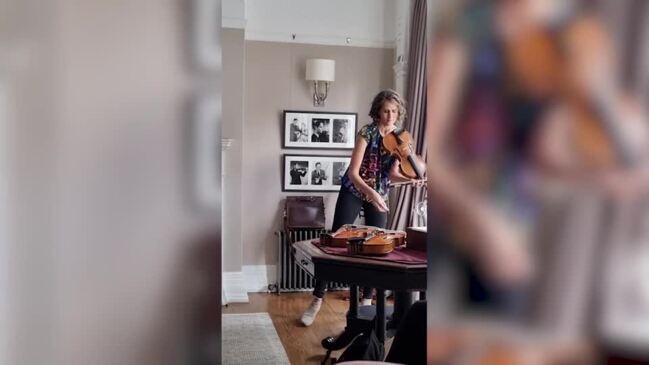
The then 21-year-old musician arrived at the Hanns Eisler School of Music Berlin to find 20 violists warming up in the same room practising the same concerto. Hours passed before her name was finally called.
“I travelled to the other side of the world to play literally four minutes to a room of five panellists,” Farrands says. “After I’d auditioned, I did the Aspen Chamber Music festival in the US [in Colorado]. I packed my bags not knowing what was going to happen, whether I would move to Germany or not. Just towards the end of the nine weeks, I was told I had the place.” It was in Berlin, where she studied for five years, that she also commissioned local luthier Ragnar Hayn to make the viola she currently plays “which is also very special, because it has a connection to me in the city here”.
If modern makers can craft wonderful sounding stringed instruments then what is the attraction of the so-called Golden Age?
“The older instruments, like Stradivari or Guarneri, have lived through so much history,” Farrands says.
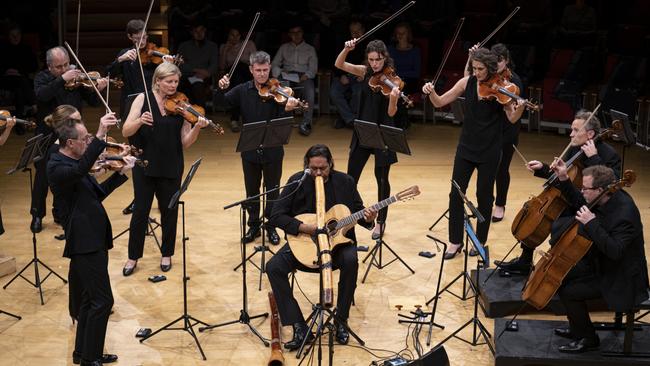
“They’ve lived through wars and they’ve survived in people’s attics and been passed on from hand-to-hand-to-hand. And that’s an incredible thing in itself.
“Sometimes the older instruments have this golden-thread sound and they project right to the back of the concert hall, no matter how soft you play, but you can find that in new instruments as well. An incredible instrument will show the player sounds and colours that the player’s imagination hasn’t yet found.”
Tognetti is looking rather pleased when he walks in to a Japanese restaurant around the corner from Milton Court concert hall at the Barbican arts centre in London, where the orchestra is rehearsing that afternoon. He has just dropped off his violin for a few small adjustments at instrument dealer J & A Beare Ltd – affectionately known as “Beare’s” – and the store has lent him a fiddle to play in the meantime. “They gave me a 1721 Stradivarius, unnamed, that I’m walking around with on the Tube,” he says, referring to the case under the table as the waiter arrives with bento boxes.
A couple of days later, Tognetti stays back after rehearsal to test the violin with Vanska. The pair are partners in music and in life and can communicate with a look, a gesture, the sound of an instrument. Vanska plays each violin from the stage while Tognetti listens from the stalls. In the same way one would road test a Ferrari, Vanska switches gears to see what the Strad can do.
The record for a violin sold at auction is held by a 1721 Stradivarius ($US15.9m in 2011), while a 1714 violin by the maker comes a close second ($US15.34m in 2022). Golden Age violas are even harder to come by. Stradivari is said to have made only 10 complete violas, one of which Sotheby’s attempted – and failed – to sell in 2014 with a price tag of $US45m. A composite Stradivari viola – where parts of the original instrument have been replaced – sold recently for $GBP2.5m.
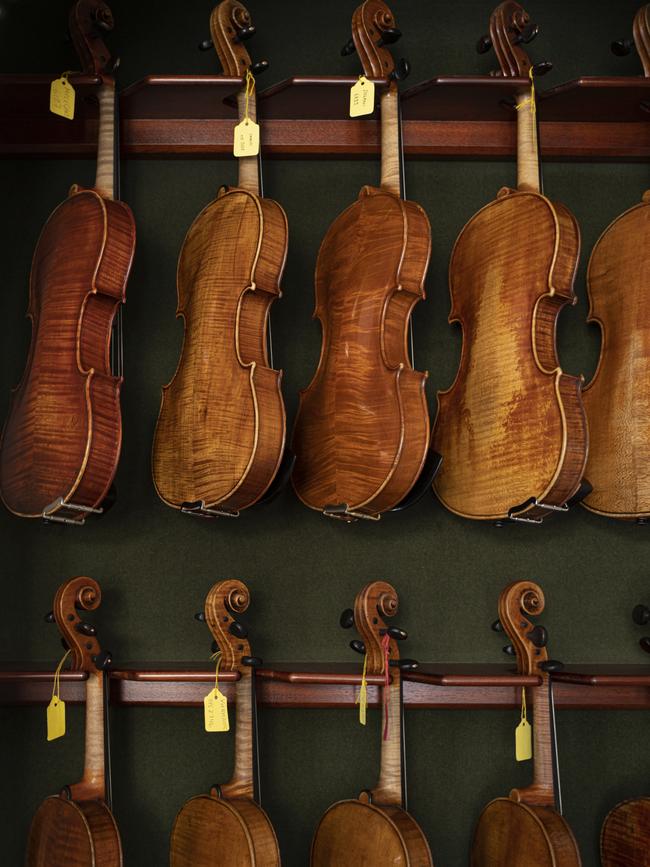
If Farrands can find a viola in London, it will need to come back to Australia for a months-long trial in the orchestra to see how it adapts to different acoustics and repertoire before the boards of the ACO and the fund can even consider approving the purchase.
“If they don’t let it come back to Australia then there’s no chance of us buying it because we are buying it as an investment,” Tognetti says. “It has to sound amazing.”
Scouting for rare instruments is, of course, just a small fraction of what the orchestra gets up to while on tour. Aside from performing, rehearsing, and practising, almost all of the players are busy seeing concerts and meeting up with former colleagues, teachers and students in their down time. One quickly gets the sense that, particularly in London, this orchestra has deep roots in Europe.
At one of the rehearsals in London, Tognetti is in full dissection mode. As part of the ACO’s three-year residency as International Associate Ensemble at Milton Court at the Barbican, 19 students from the Guildhall School of Music will join the orchestra for the third concert, a program featuring music by Radiohead’s Jonny Greenwood, the National’s Bryce Dessner and works by Polish composers. Twenty-two-year-old Czech masters student Krystof Kohout is on the first violin desk directly in front of Tognetti, who stops him during a run-through of a 1958 piece by Witold Lutosławski. “You’ve got to project to the back of the hall,” Tognetti tells him, then picks up his violin to demonstrate. The double basses are told they need more “crunch”; the mood of the prologue to Musique Funebre is supposed to feel like “someone stomping on your brain”.
“Richard just gives an impulse and everyone joins in efficiently,” says the lively Kahout, who at one point even had a solo sprung on him. “It feels very creative, trying out things I haven’t thought of before.”
The ACO has been touring to London since the 1990s, but it was the three-year residency at the Barbican, home to London Symphony Orchestra, that really supercharged its reputation, Tognetti says. “It really gave us great oxygen because we were able to explore different repertoire rather than just a one-night stand with a well-known soloist,” he says. “The orchestra itself was able to be on the stage as the Australian Chamber Orchestra.”
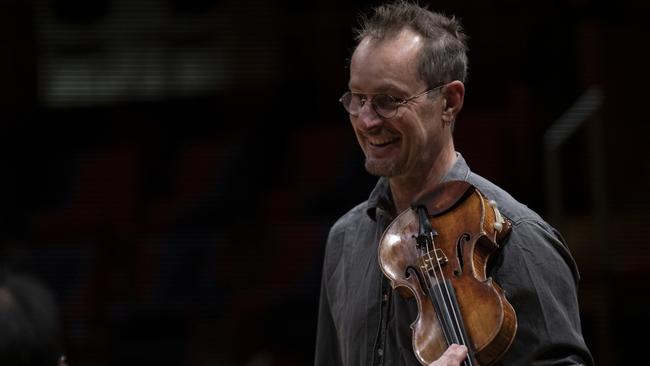
Oud virtuoso Joseph Tawadros, former Australian Ballet artistic director David McAllister, composer Brett Dean and famed chef Heston Blumenthal can be spotted in the audience at the ACO’s first Barbican concert, which opens with didgeridoo virtuoso William Barton performing his piece Didge Fusion and ends in Tognetti’s arrangement of Beethoven’s Kreutzer sonata (which Tognetti renamed as the Bridgetower Sonata, after its original dedicatee, black British violinist George Bridgetower).
In a four-star review for The Times, Rebecca Franks says Tognetti “as a performer is as much the solo showman as the collegiate chamber musician”, and that she was left wanting to hear more of Barton. The second concert sees the ACO perform the UK premiere of River, a cinematic collaboration with filmmaker Jennifer Peedom reflecting on rivers as the arteries of life, to a full concert hall. Audiences at the two Berlin performances were just as enthusiastic, even if attendances were not as robust in an industry still recovering from the pandemic.
“That micro-residency we got in Berlin was difficult because it’s post-Covid,” Tognetti says. “They still feel like they’re suffering. Apparently every place in Berlin is really suffering.”
The ACO performed at Berlin’s Pierre Boulez Saal, a 360-degree concert hall designed by Canadian-American architect Frank Gehry that situated the musicians on a central stage surrounded by the audience. After the interval, the orchestra did a 180-degree turn to show their faces to the other half of the audience (which means someone had the awkward task of deciding whether Australian Ambassador to Germany Philip Green should see the orchestra’s backs for the first or second half of the concert).
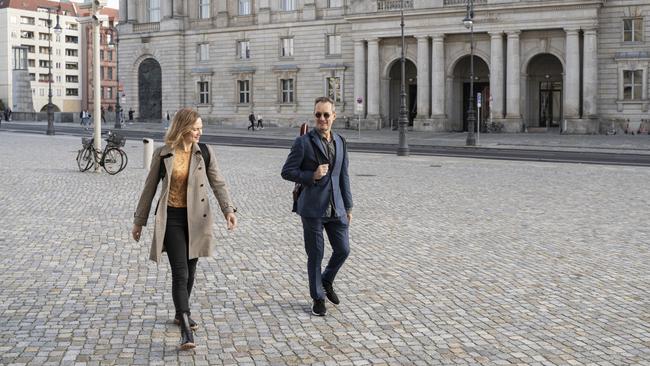
Being just a few metres away from the musicians in such an acoustically-rich space was thrilling, the idiosyncrasies of their movements on full display: from violinist Aiko Goto’s expression blooming with happiness to Farrands raising her heels to the music as if she was about to lift into the air.
“It was great to embrace this Frank Gehry space in the round,” Tognetti says. “After the freshness of Pier 2/3 [the ACO’s home in Sydney’s Walsh Bay] and to feel that commonality with the Boulez Saal, it was great to compare halls.
“It feels good to meet up with European musicians who we haven’t seen for many, many years. You’ve got to remember that we’ve got a lot of Europeans in the orchestra and they were pretty shackled being on prison island.”
He is, of course, referring to Australia’s international travel ban during the pandemic, before which the orchestra spent up to two months of each year touring overseas, helping the musicians to stay at the top of their game on the world stage.
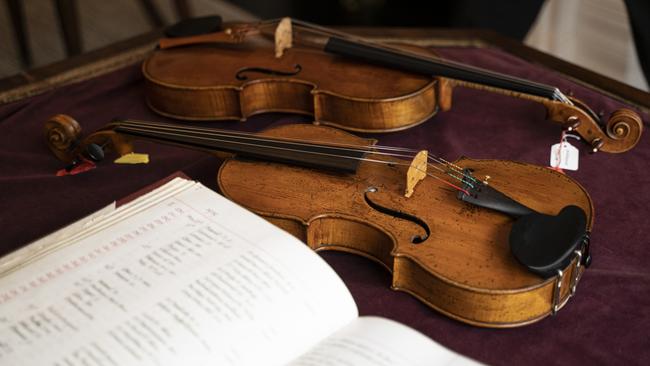
The ACO, which receives only about 10 per cent of its revenue from the Australian government, typically performs overseas under a fee-for-hire arrangement so the producer assumes the box-office risk. Still, inflation has made almost every aspect of touring more expensive for every artist on the planet. “I think we’ll probably pick up the pieces at the end of it,” Tognetti says. “But we made the decision that we just simply had to do it. Three years, you know, down on prison island. We had to get out.
“We’re an international group and I’m not going to be stuck in Australia. There’s not enough for us to do and we need the communication with the outside world.”
Strings dealer Beare’s is in a six-storey period building in London’s Marylebone, not far from the bustle of the restaurants and bars of Soho. Signed photographs of famed strings players such as violinist Anne-Sophie Mutter and cellist Jacqueline du Pre decorate the walls of the staircase leading up to a room featuring lines of expensive violins. But it’s not the violins we are interested in today. Farrands has come to play three Italian-made violas.
First, Farrands takes a viola made by Pietro Giovanni Mantegazza in Milan in about 1790, raises her bow and begins to play to a captive audience of the ACO’s patrons who have come to get an insider’s look at the beginning of the fund’s buying process.
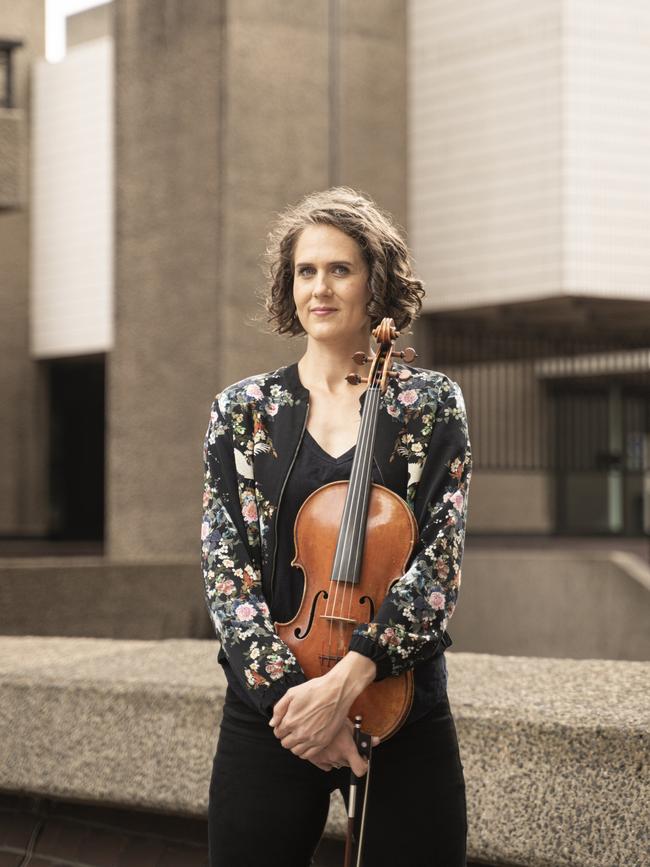
Next up is a c. 1785 instrument made in Como by Felice Beretta, who trained with the son of famed violin-maker Giovanni Battista Guadagnini. And finally, the oldest and arguably most prestigious of the lot, a viola that is at least 400 years old made in Cremona by brothers Antonio and Hieronymus Amati, who learned the craft from their father. Beare’s former director Simon Morris, one of the ACO’s instrument advisers, says “generally these old Italian instruments are worth millions rather than hundreds of thousands of US dollars”. “An Amati family violin has sold privately for over $US3m and so a viola in the same condition would be worth a similar amount,” Morris says. This particular instrument is so rare that he estimates there might be 20 or so violas by the Brothers Amati in the world – perhaps even less.
“The sound quality of the Amati was immediately clear,” Farrands says, after playing the instruments. “It’s sound is velvety, and it somehow draws you in to listen closer. There’s a depth and complexity in the sound that is extremely alluring. The Mantegazza’s sound was more concentrated and punchy to the ear in contrast to the Amati.”
In the hotel where the musicians are staying, it is not uncommon to hear the sound of a violin drifting down the hallway in the breaks between performances and rehearsals. One starts to wonder if a professional orchestral musician will spend more hours of their life playing their instrument than sleeping. Back at the courtyard in Berlin, Farrands spoke of the curiosity needed to sustain this drive, the curiosity that took her to Germany to seek out a mentor and that ultimately led her to the ACO.
“If we’re not constantly searching for new sounds, and new colours, new things in the music, then it’s not sustainable,” she says. “We can’t spend our lives doing something if we’re not curious about things. When the instruments give us that curiosity as well, it’s a huge help to us and helps us sustain our careers.”
The Brothers Amati viola piques Farrands’s interest and she tests it out with the ACO during its Barbican residency. But after a few days in her hands, the viola has reached the end of a short yet intense relationship. Farrands has decided the instrument will not be coming back to Australia for a trial. “I can feel something special will come my way,” Farrands says. “Sometimes the most beautiful things in life come when we least expect it.”
The ACO’s next concert program is The American, touring nationally until November 23. Bridget Cormack travelled to Berlin and London with the assistance of the ACO.


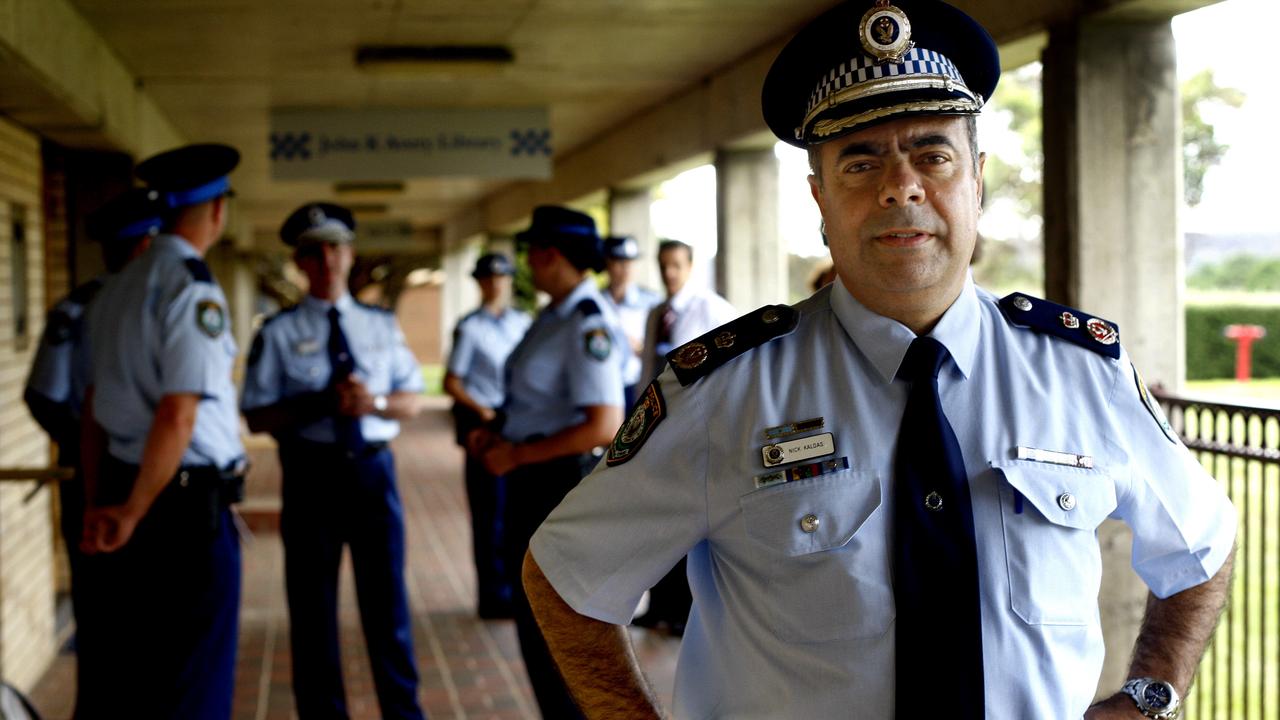
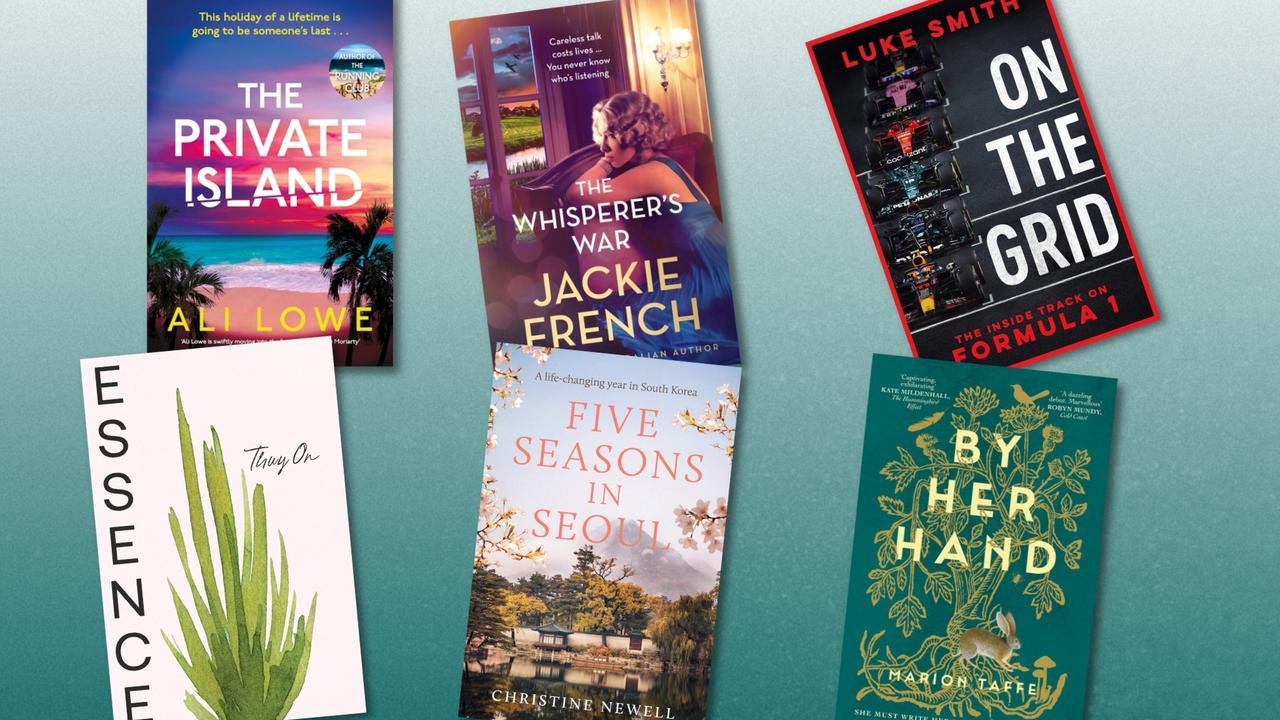
To join the conversation, please log in. Don't have an account? Register
Join the conversation, you are commenting as Logout